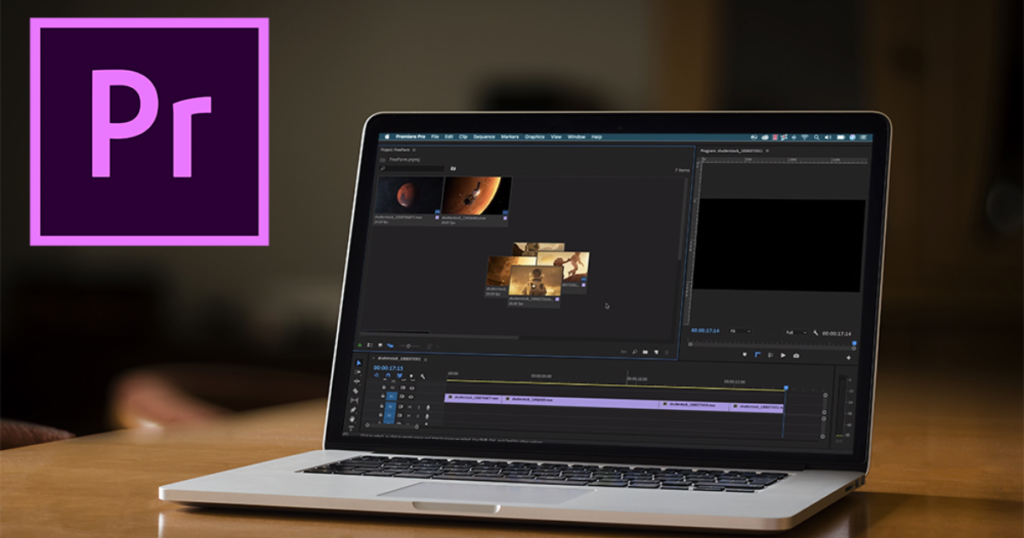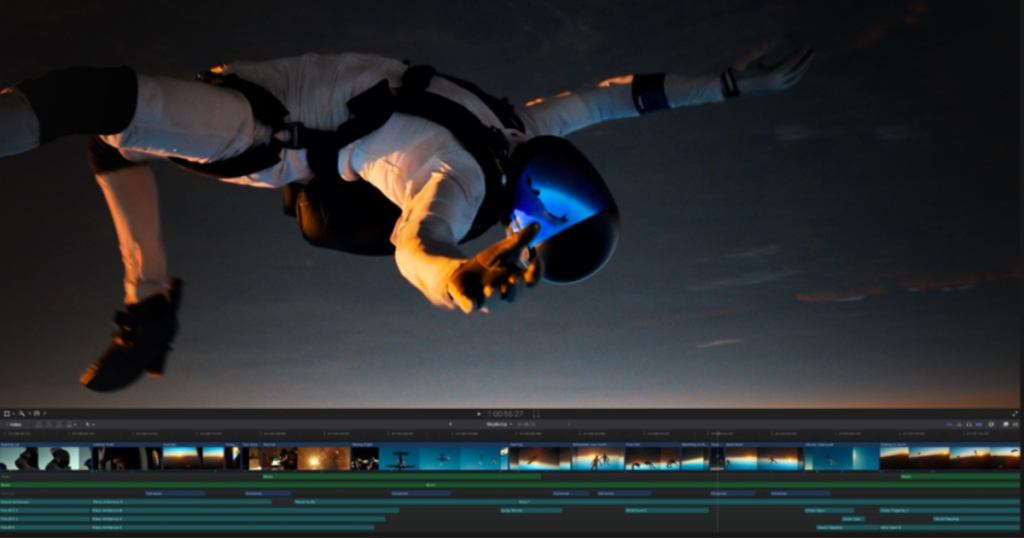In the era of digital storytelling and content creation, finding the Best AI Video Editing Software is paramount to unlocking your creative potential. Picture this: a world where your video editing software doesn’t just assist you but seems to possess an almost uncanny ability to anticipate your creative needs. Welcome to the future of video editing, where artificial intelligence, the silent wizard behind the screen, is making waves.
Understanding AI Video Editing:
Before we dive headlong into the world of AI-powered video editing software, it’s crucial to understand the magic wand we’re wielding – artificial intelligence. In the context of video editing, AI serves as a digital sorcerer, capable of comprehending and manipulating video footage with a precision that transcends human capability. Imagine a tool that can not only trim and stitch clips together but also recognize faces, adjust lighting, enhance colors, and even suggest creative transitions based on the content’s emotional tone.
AI achieves these feats through machine learning algorithms, which analyze vast datasets to learn patterns, and neural networks, which simulate the human brain’s decision-making process. It’s a fusion of science fiction and reality, and as we delve deeper into this realm, you’ll discover the remarkable ways in which AI is reshaping the landscape of video editing, making it more accessible, efficient, and creatively stimulating than ever before.
Top AI Video Editing Software Options:
Adobe Premiere Pro:
Adobe Premiere Pro is a powerhouse in the world of AI video editing, trusted by both amateur enthusiasts and professional filmmakers. One of its standout features is Auto Reframe, which harnesses AI to intelligently resize video content for different platforms, saving editors valuable time and effort. Additionally, Adobe Premiere Pro boasts AI-powered audio enhancement tools that can significantly improve the quality of sound in your videos. Its versatility shines through, offering a wide range of video and audio editing capabilities alongside its AI-driven features. However, one potential downside is its subscription pricing model, which might not be budget-friendly for all users.

Final Cut Pro X:
Final Cut Pro X, developed by Apple, is a favorite among Mac users for its seamless integration with the macOS environment. It combines an intuitive interface with AI enhancements like Smart Conform, which automates the adjustment of frames to fit different aspect ratios. This feature is particularly useful for content creators who need to adapt their videos for various platforms. Final Cut Pro X is known for its exceptional performance on Apple hardware and its ability to produce high-quality video output. However, it’s worth noting that it’s exclusive to macOS, which limits its accessibility to Windows users.

DaVinci Resolve:
DaVinci Resolve stands out as a comprehensive AI video editing and color correction software that offers professional-grade tools. AI plays a significant role in speeding up tasks such as face recognition for color grading and noise reduction, helping editors work more efficiently. What makes DaVinci Resolve even more appealing is its cost-effectiveness, with a free version available for users on a tight budget. However, some users may find that it has a steeper learning curve compared to other software, particularly beginners.

HitFilm Pro:
HitFilm Pro is renowned for its impressive visual effects capabilities, making it a top choice for content creators who want to add a touch of Hollywood magic to their videos. The inclusion of AI-driven features like auto-stabilization and motion tracking makes it a powerful tool for enhancing video quality. However, beginners might find HitFilm Pro overwhelming due to its extensive feature set, which may require some time to master.

Lumen5:
Lumen5 takes a unique approach to video creation by specializing in transforming text into engaging video content using AI-powered text-to-video technology. It’s an excellent choice for social media content creators who want to quickly produce eye-catching videos. Lumen5’s user-friendly interface and automation features make it accessible to those with limited video editing experience. However, it’s important to note that Lumen5 may not offer the same level of depth and control over editing as some of the more robust AI video editing software options, as it focuses primarily on automation and ease of use.

To truly grasp the impact of these AI-driven tools, we’ll delve into real-world testimonials and case studies, where content creators have harnessed the power of these software options to streamline workflows, elevate production quality, and unleash their creative potential. Through these narratives, you’ll witness firsthand how AI is revolutionizing the art of AI video editing across a diverse range of projects and industries.
Also, don’t forget to check out the Best video editing software to expand your editing horizons.
How to Choose the Right AI Video Editing Software:
Selecting the ideal AI video editing software is like picking the perfect tool for a creative masterpiece. It may seem overwhelming, but with a few simple considerations, you can make the right choice.
- User-Friendliness: Begin by evaluating the software’s user interface. Is it intuitive and easy to navigate? A user-friendly interface can save you time and frustration.
- AI-Powered Features: Pay attention to the AI features that matter most to you. Does the software offer AI-driven auto-editing tools, like automated video trimming or smart cropping? Different software may excel in various AI capabilities, so choose the one aligned with your needs.
- Pricing and Licensing: Be mindful of your budget. Some software offers free versions or trial periods, while others require subscription fees or one-time purchases. Consider what fits your financial constraints and long-term plans.
- Compatibility: Ensure that the software is compatible with your computer’s operating system and hardware. Some options may be exclusive to certain platforms, like macOS, so verify compatibility before diving in.
To make an informed decision, seek out user reviews and testimonials. These can provide valuable insights into real-world experiences with the software. Moreover, don’t be afraid to experiment with trial versions to get a feel for how each software suits your workflow. By weighing these factors and considering your unique editing needs, you’ll find the perfect AI video editing software to bring your creative visions to life.
V. The Future of AI Video Editing:
As we peer into the future of AI video editing, it becomes abundantly clear that the transformation we’ve witnessed in recent years is just the tip of the iceberg. The trajectory of this technology promises to revolutionize the industry in several exciting ways.
- Hyper-Personalized Content Creation: AI will increasingly cater to the individual, enabling creators to craft highly personalized videos. Algorithms will analyze user data, preferences, and behaviors to tailor content in real time, delivering a more engaging and relevant viewer experience.
- Automated Storytelling: AI will evolve to become a storytelling collaborator, generating narratives, dialogue, and scene transitions based on predefined themes and emotional cues. This will allow creators to explore more complex and imaginative storytelling possibilities.
- Enhanced Efficiency: AI-driven video editing will continue to streamline workflows. Tasks that once consumed hours, such as color correction and audio editing, will be accomplished in minutes, freeing up time for creative experimentation.
- Accessibility for All: The democratization of AI video editing will surge as user-friendly AI tools become more widely accessible. Novice creators, small businesses, and content creators with limited resources will have the means to produce high-quality videos without extensive training.
- Ethical Considerations: As AI takes on a larger role in video editing, ethical concerns about deepfakes and manipulated content will intensify. Striking a balance between creative freedom and responsible use of AI will be a key challenge.
- Augmented Reality (AR) and Virtual Reality (VR): AI will play a pivotal role in AR and VR content creation, enabling seamless integration of virtual elements into real-world footage, and fostering immersive storytelling experiences.
- Collaboration Between Humans and Machines: The future will see humans and AI collaborating in symbiosis, each leveraging their unique strengths. Creators will harness AI’s data-driven insights and automation while retaining the irreplaceable human touch in storytelling.
The future of AI video editing is full of exciting possibilities, like making editing faster and personalizing content. But it also brings up important ethical questions. As we move forward, combining human creativity with AI will change video editing in ways we’re just starting to see.
Premiere Pro vs Premiere Rush | Which One Should You Pick?
VII. Additional Resources:
In your quest to master the art of AI video editing, it’s essential to have a plethora of resources at your disposal. Here’s a curated list of valuable materials, tools, and references to help you on your creative journey:
A. Links to Tutorials and Learning Materials:
- Adobe Premiere Pro Tutorials: Dive deep into Adobe Premiere Pro’s features with comprehensive tutorials covering various aspects of AI video editing.
- Final Cut Pro X Support: Apple’s official resource hub for Final Cut Pro X, offering guides, tutorials, and troubleshooting assistance.
- DaVinci Resolve Training: Explore a range of training resources, including video tutorials, webinars, and certification programs for DaVinci Resolve.
- HitFilm Express Tutorials: Discover how to use HitFilm Express effectively with step-by-step video tutorials covering various aspects of video editing and visual effects.
- Lumen5 Learning Center: Lumen5’s learning center provides guides and tutorials for utilizing their AI-powered text-to-video technology.
B. Recommended Reading and References:
- “The Filmmaker’s Handbook” by Steven Ascher and Edward Pincus – A comprehensive guide to the art and craft of filmmaking, including video editing techniques.
- “The Art of Color Correction” by Alexis Van Hurkman – An essential resource for understanding color grading and correction, a crucial aspect of video editing.
- “The Lean Startup” by Eric Ries – Although not specific to video editing, this book offers valuable insights into entrepreneurship and innovation, which can be applied to creative endeavors.
- OpenAI’s Blog – Stay updated on the latest developments in AI technology, including its applications in video editing and content creation.
- Filmmaker Magazine – A source of inspiration and information for filmmakers, including articles on AI in the film industry.
These additional resources will serve as your compass on your journey to mastering AI video editing. Whether you’re a seasoned professional or a beginner taking your first steps into this captivating world, the knowledge and tools at your disposal are boundless, allowing you to harness the full potential of AI in video editing. Happy editing!































